Raising Butterflies
Have you ever thought of raising butterflies as part of your middle school science curriculum? It is one of the fun science activities for middle school you can easily do at home.
No matter how old you are, butterflies are one of those animals that can take your breath away. Who hasn’t stood still when around them, hoping that one would land on you so you could see them up close?
These evasive creatures are so beautiful and undergo one of the most amazing metamorphoses of any animal. Kids love caterpillars and butterflies, but rarely get the chance to see this change.
Using a live butterfly garden during a science lesson is the best way for close observation.
When you raise butterflies in your homeschool, you give kids the chance to see tiny caterpillars change into adult butterflies.
This is a fun and educational hands-on science activity that can easily be done at home with kids of all ages. And it makes an excellent summer science experiment for middle school!
RAISING BUTTERFLIES
The first step is to either purchase butterfly eggs or live caterpillars. Then, you’ll need to find the right host plant (like milkweed plants) for your butterfly species that they’ll feed off of.
If you’re doing this as a school project, you’ll want to get a breathable container for it all to sit in so that your kids can watch the different stages.
The easiest way to study butterflies is to get a kit like an Insect Lore Butterfly Growing Kit. (links are affiliate links) This is a company that’s been around for a long time, helping families research these insects.
When my girls were younger, I got one for them as a hands-on activity for our science lessons. Along with a mesh tote, there was a card included that they had to send in when they were ready for the caterpillars.
Just so you know, butterfly kits don’t come with caterpillars or eggs because the weather has to be warm enough for the butterflies to survive when they emerge.
Once we received our plastic containers with the caterpillars inside, it was time for hands-on science!
Butterfly Growing Kit Butterflies & Moths
Butterflies & Moths Sensational Butterflies
Sensational Butterflies
What is the Study of Butterflies?
The study of butterflies is called lepidopterology, which is a branch of entomology.
It’s an exciting area of science that middle schoolers love to learn about. It involves looking at the anatomy, behavior and evolution of butterflies throughout the world.
By studying the butterfly life cycle, we can better understand how our environment works and how we can have a negative impact on these and other creatures. Recent research shows that habitat loss and climate change have had huge effects on these insects.
Scientists often use this knowledge to help protect butterflies and other species living in fragile ecological communities.
What are the 5 Stages of a Butterfly?
The life cycle of butterflies has five stages: egg, caterpillar (butterfly larvae), pupa (chrysalis), adult butterfly, and death.
1. Egg – The female butterfly lays a tiny egg on the underside of the leaves or stems of the host plant. This will provide food for the caterpillar when it hatches.
2. Caterpillar (Larva) – After hatching, the caterpillar spends most of its time eating leaves from the host plant it was laid on. This stage can last for several weeks or months, depending on the species of butterfly.
3. Pupa (Chrysalis) – Once it has reached a certain size, the caterpillar will form a pupa or chrysalis, in which it transforms into an adult butterfly.
4. Adult Stage – After emerging from its chrysalis, the adult butterfly can live for several weeks or months before laying eggs and starting the cycle again.
5. Death – The life span of a butterfly depends on the species, but it’s often a short life. It usually falls between one week and one year. In some cases, a type of butterfly may live for up to 6 months or more. Eventually, they will reach the end of their life cycle and die.
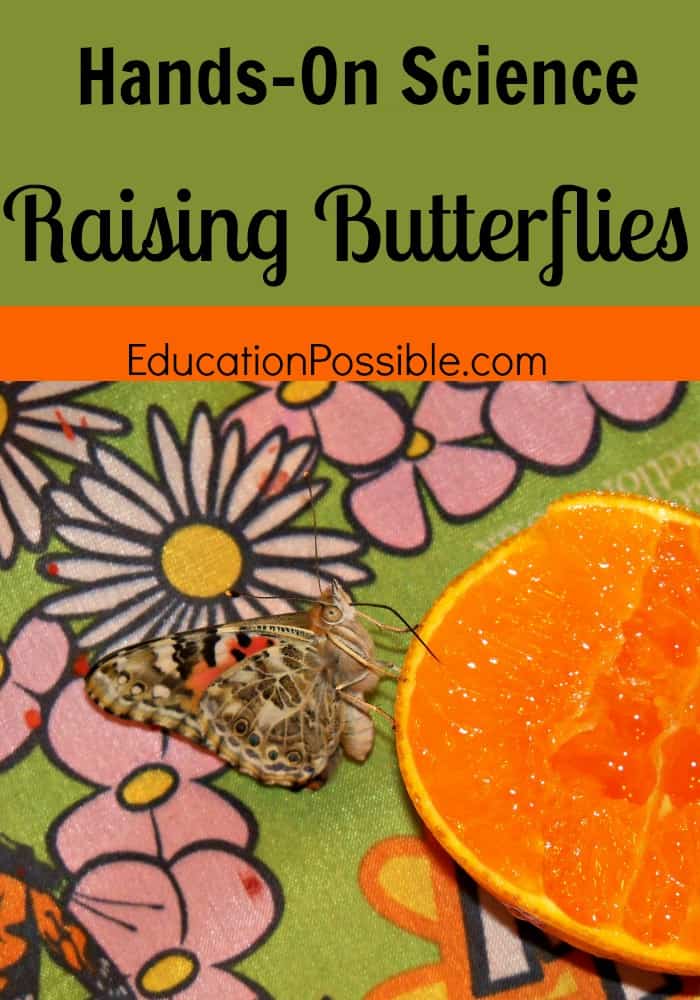
Learning About Butterflies
Once we received our caterpillars, at last, it was time to set up our butterfly house and start our science project. We started our daily observation of the process of metamorphosis.
Here is our experience raising a handful of the Painted Lady species of butterflies.
We had never been close to these animals for such a long time before and we enjoyed watching them eat and grow. We made sure to keep the caterpillars out of direct sunlight.
Every day, the girls charted their growth on these butterfly worksheets and some days they seemed to grow exponentially!
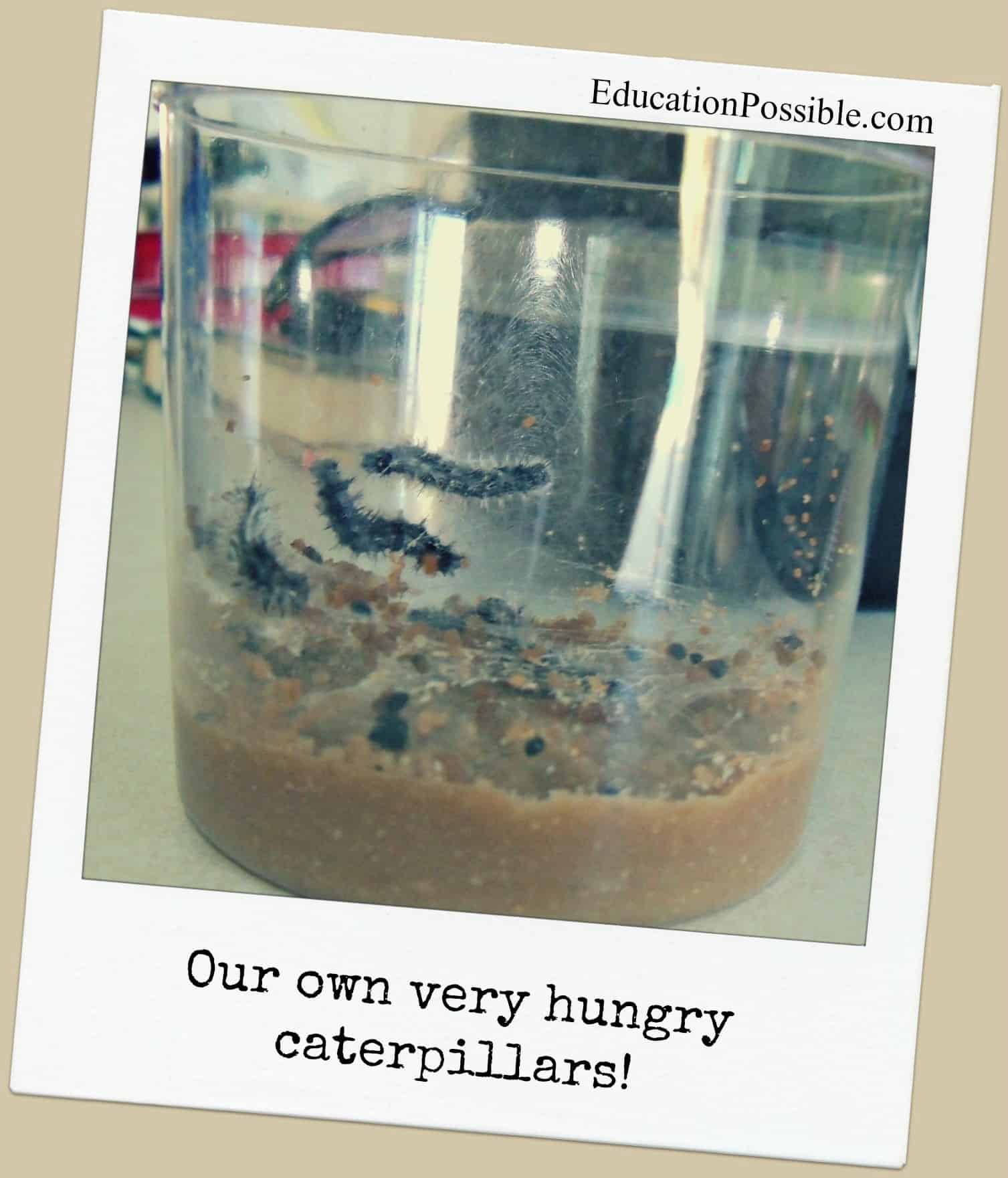
For the first time, we had an opportunity to watch a caterpillar’s metamorphosis up close.
By the time they emerged, we had beautiful Painted Lady butterflies. It was one of the most thrilling experiences! We were fortunate that every caterpillar transformed into a butterfly.
We kept the tote on the school table, in a safe place, so the kids could watch them every day.
One butterfly came out with shriveled wings, which my kids named “Squiggy.” This provided the perfect opportunity for us to do further research about why his wings were different and what that meant for his survival.
They took special care of him, and to this day, they still talk about that butterfly.
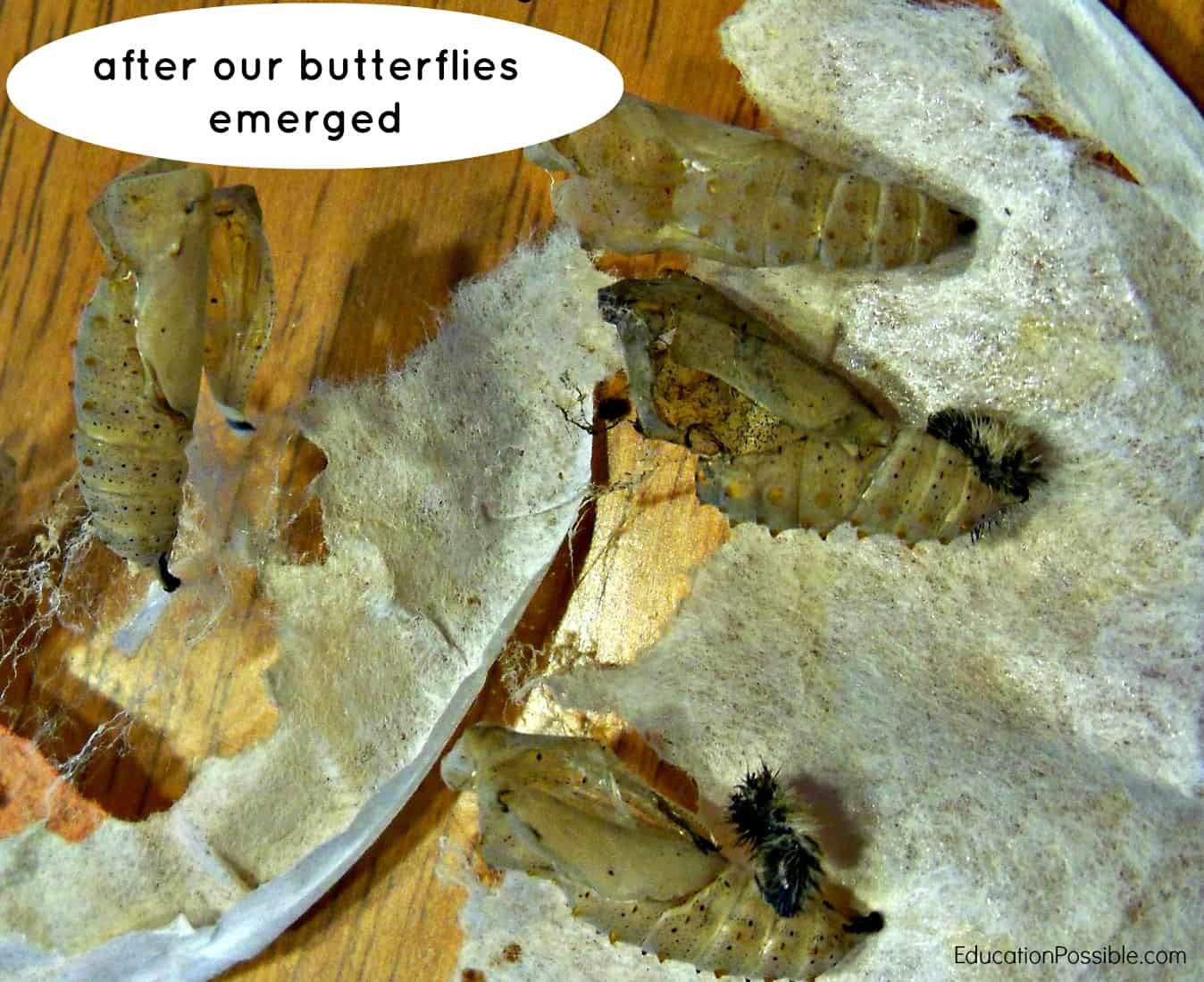
One of our favorite things to do was sit and watch them eat.
We placed orange slices in the mesh container and they loved eating them. It was fascinating watching the proboscis dart in and out of the oranges.
Finally, it was release day, which was definitely bittersweet.
Even though we were proud that we had raised these creatures that were now ready to go off into the world, we would miss them. But we really loved learning about them and watching them so closely.
To be sure, this was definitely one of our favorite science projects!

Butterfly Questions
Here are the answers to some of the common questions you might have about raising butterflies with your kids.
How Hard is it to Raise Butterflies?
To be honest, with the butterfly kit, it was one of the easiest science experiments we’ve ever done. We simply followed the instructions and everything went smoothly.
The larvae came with their own food inside the cup and the butterflies needed a type of sugar water, which is why we used sliced oranges.
When should you start a butterfly kit?
It depends on where you live. You need the daytime temperatures to be between 50 and 85 degrees for the butterflies. They thrive in the warmer weather.
So, wait to order your eggs or caterpillars until you are sure that the weather will remain on the warm side. That means late spring or early summer is the perfect time for most locations.
Do I need to feed my butterfly after it emerges?
Yes. You’ll need to offer them nourishment while they’re still inside.
So, after your butterflies have hatched, it’s a good idea to add some fruit, nectar (sugar water), or even colorful flowers (nectar plants) to the cage for them to enjoy.
When should I release my butterflies?
While you’ll want to keep the butterflies in the cage for a bit so you can observe them, you’ll want to release them within a week of them emerging from the chrysalis.
How do I make a butterfly habitat in my backyard?
To keep these and other butterflies around, you can make a butterfly habitat in your yard.
The goal is to make it as butterfly friendly as possible. This means planting nectar-producing plants, adding a water source, and providing shelter and hibernation spots.
Additionally, you can also buy or make butterfly feeders to put out in your garden. With a little effort, you can create a paradise for butterflies!
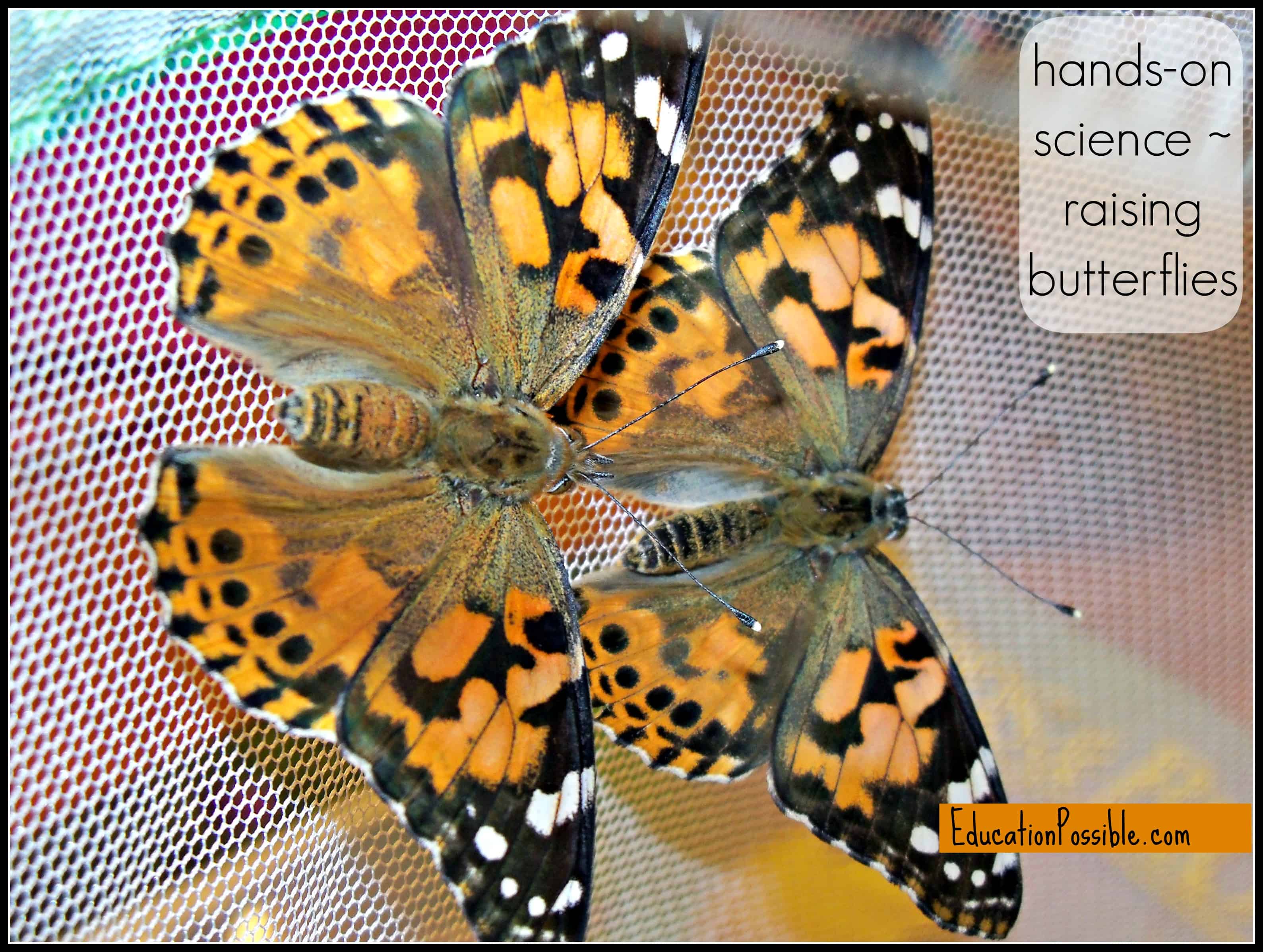
BUTTERFLY WORKSHEET
This Butterfly Study printable for middle school will help you chart the life cycle of your caterpillars & butterflies, as well as a great way to guide your research.
It includes the following pages:
- Butterfly information worksheet to record your findings.
- Butterfly life cycle page to label things related to butterflies.
- Questions for students to answer about butterflies.
- A page to record your daily observations as you watch your caterpillars and butterflies grow and change.
- A worksheet for kids to dream up their perfect butterfly garden.
ADDITIONAL BUTTERFLY ACTIVITIES
Here are some other hands-on activities you can add to your butterfly lesson plans. They’re easy ways to get kids excited to learn.
- Take out your nature journal and sketch what you’re seeing.
- Butterfly books will help your students explore and understand the life cycle of butterflies.
- Use this rainbow string painting method to create a colorful butterfly.
- Check out Butterflies Flutter By for lots of other notebooking pages and hands-on activity ideas.
- All-in-one butterfly unit study.
Raising butterflies is a wonderful spring or summer activity for tweens.
Don’t forget to grab a Butterfly Study for your tween. It’s a great tool to help guide your learning and an easy way for your middle schoolers to record all of their findings.
My kids found so much joy in each step of this science experiment. It is one of our science projects that they remember clearly and would gladly do again.
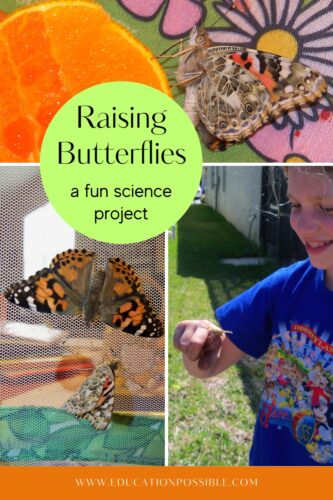
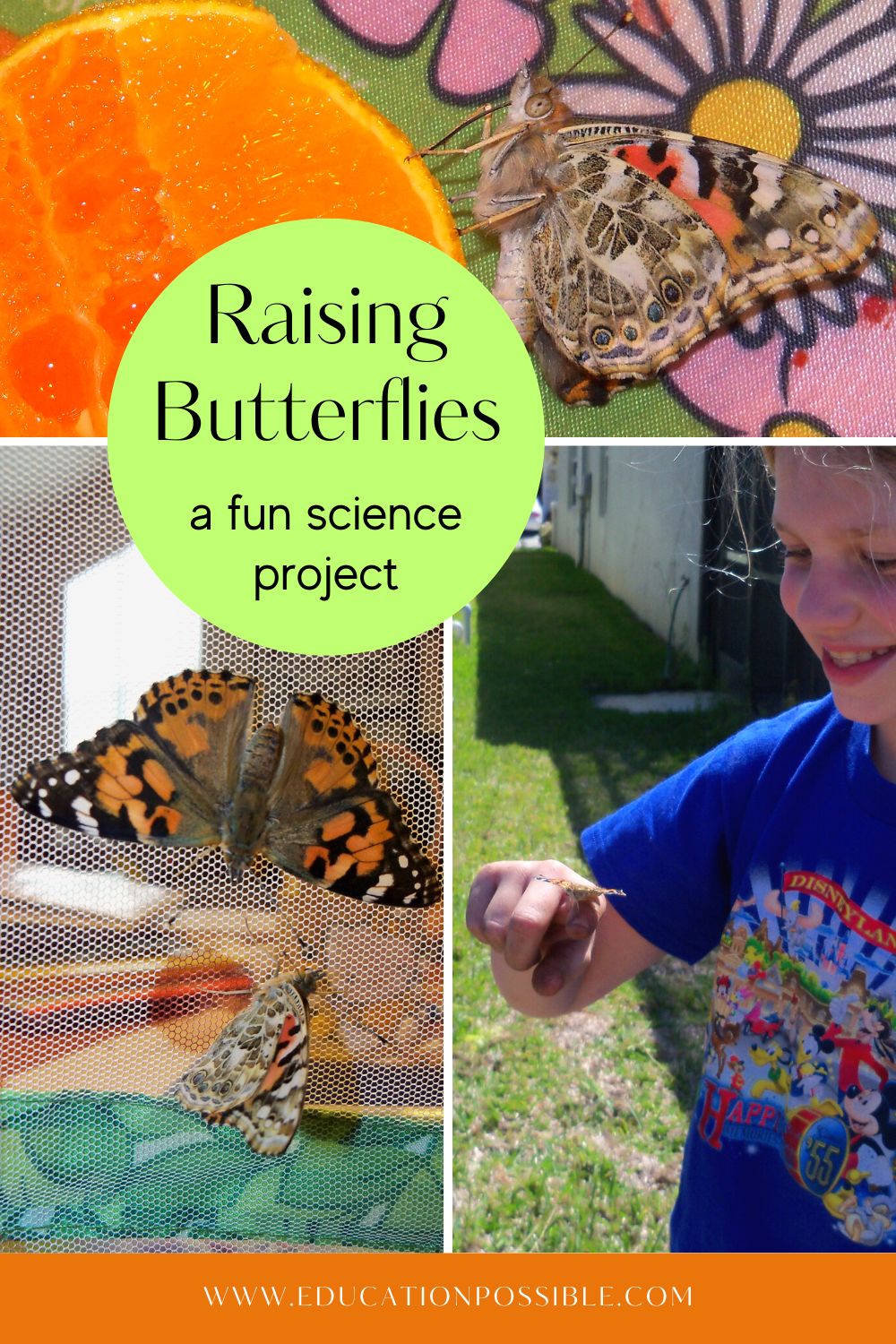




My kids love caterpillars and butterflies! They love collecting caterpillars and watching them grow and hoping they will go into a cocoon and become a butterfly. So far, we’ve only had one that actually became a butterfly, but it was truly an amazing experience! Thank you for sharing this with us! I’ve pinned this so when the kids start collecting caterpillars this summer I’ll be ready for that teachable moment with your worksheets 🙂
That sounds like a lot of fun Missy. We’ve never collected our own caterpillars, but I know my kids would love it. I was amazed that all of our caterpillars turned into butterflies. I had already told them not to expect much (from what I had read online), so we were pleasantly surprised.
I’m glad you will be able to use our download. Hopefully you will get to learn even more about butterflies this summer!
Thank you for stopping by!
We’ve done butterflies twice now. Once when my big kids were littler, and again last year. Unfortunately, it was too cold & windy to release ours, so we had to wait until they died off one by one. It was kind of sad, but the cool thing was that they were laying eggs before they died, so we actually got to see their little blue eggs.
Oh that is so sad Shecki. But like you said, at least something positive came out of it. I’ve never seen the eggs. I bet your kids were amazed. I was disappointed at first that I had to turn in the card, but it really does make a difference when you release them.
I love this post and the printables are fabulous! I’d love to add this to my Ultimate Guide post in April. 🙂
Thank you Eva!! We would love for you to use the post for your Ultimate Guide. I agree – the printable is so cool, isn’t it? Susan did it for us.
This would be an excellent project for my daughter and I. Thanks for posting I have been looking for great science projects.
You’re welcome Brandy! We love science here, so I’m always posting the fun stuff we’re doing. Do you use Pinterest? I find a ton of cool science project ideas there. Thank you so much for stopping by!
Thank you for linking up with the Hearts for Home Blog Hop! I chose your post as one of my favorites from last week and am featuring it on this week’s post and on our Pinterest board. If you’d like an “I Was Featured” button, stop by to get the code: http://learningtable.blogspot.com/2014/03/hearts-for-home-blog-hop-57.html
Thank you Anne! We love your hop and we’re always so excited when we’re featured. I hope your readers enjoy the post and our story inspires some of them to raise their own butterflies.
This is the best printable I have seen for butterflies!
Thank you for stopping by the Thoughtful Spot Weekly Blog Hop this week. We hope to see you drop by our neck of the woods next week!
Thank you so much Jill! Susan did an amazing job putting my jumbled ideas into a beautiful download!!
We will definitely be back – we love your blog hop 🙂
My kids love raising butterflies. We’ve done it 2-3 times already and they are begging me to order again this year (need to do it soon before it gets too warm in SC for them to ship!).